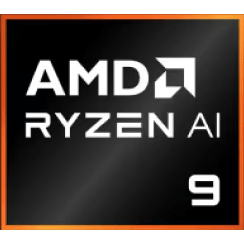AMD Ryzen AI 9 365 vs Intel Core 7 150U
We compared two laptop CPUs: AMD Ryzen AI 9 365 with 10 cores 2.0GHz and Intel Core 7 150U with 10 cores 1.8GHz . You will find out which processor performs better in benchmark tests, key specifications, power consumption and more.
Main Differences
AMD Ryzen AI 9 365 's Advantages
Better graphics card performance
Higher specification of memory (8000 vs 6400)
Larger memory bandwidth (89.6GB/s vs 83.2GB/s)
Higher base frequency (2.0GHz vs 1.8GHz)
Larger L3 cache size (24MB vs 12MB)
More modern manufacturing process (4nm vs 10nm)
Intel Core 7 150U 's Advantages
Lower TDP (15W vs 54W)
Score
Benchmark
Cinebench R23 Single Core
AMD Ryzen AI 9 365
+7%
2007
Intel Core 7 150U
1874
Cinebench R23 Multi Core
AMD Ryzen AI 9 365
+106%
19766
Intel Core 7 150U
9560
Geekbench 6 Single Core
AMD Ryzen AI 9 365
+15%
2940
Intel Core 7 150U
2556
Geekbench 6 Multi Core
AMD Ryzen AI 9 365
+65%
14860
Intel Core 7 150U
8980
Blender
AMD Ryzen AI 9 365
+162%
257
Intel Core 7 150U
98
Passmark CPU Single Core
AMD Ryzen AI 9 365
3771
Intel Core 7 150U
+6%
4010
Passmark CPU Multi Core
AMD Ryzen AI 9 365
+68%
29308
Intel Core 7 150U
17381
General Parameters
Jun 2024
Release Date
Jan 2024
Amd
Manufacturer
Intel
Laptop
Type
Laptop
x86-64
Instruction Set
x86-64
Zen 5 (Strix Point)
Core Architecture
Raptor Lake Refresh
-
Processor Number
150U
FP8
Socket
BGA-1744
Radeon 880M
Integrated Graphics
Iris Xe Graphics (96EU)
Ryzen AI 9 (Zen 5 (Strix Point))
Generation
Core 7 (Raptor Lake-U)
Package
Transistor Count
-
4 nm
Manufacturing Process
10 nm
15-54 W
Power Consumption
12-15 W
W
Max Turbo Power Consumption
55 W
100 °C
Peak Operating Temperature
100°C
TSMC
Foundry
Intel
6 nm
I/O Process Size
-
CPU Performance
4
Performance Cores
2
8
Performance Core Threads
4
2.0 GHz
Performance Core Base Frequency
1.8 GHz
5 GHz
Performance Core Turbo Frequency
5.4 GHz
6
Efficiency Cores
8
12
Efficiency Core Threads
8
2.0 GHz
Efficiency Core Base Frequency
1.2 GHz
3.3 GHz
Efficiency Core Turbo Frequency
4 GHz
10
Total Core Count
10
20
Total Thread Count
12
100 MHz
Bus Frequency
100 MHz
20
Multiplier
18x
80 K per core
L1 Cache
80 K per core
1 MB per core
L2 Cache
1280 K per core
24 MB shared
L3 Cache
12 MB shared
No
Unlocked Multiplier
No
1
SMP
1
Memory Parameters
DDR5-5600,LPDDR5X-8000
Memory Types
DDR5-5200, DDR4-3200, LPDDR5-6400, LPDDR5x-6400, LPDDR4x-4267
256 GB
Max Memory Size
96 GB
2
Max Memory Channels
2
89.6 GB/s
Max Memory Bandwidth
83.2 GB/s
No
ECC Memory Support
No
Graphics Card Parameters
true
Integrated Graphics
true
800 MHz
GPU Base Frequency
300 MHz
2900 MHz
GPU Max Dynamic Frequency
1300 MHz
768
Shader Units
768
48
Texture Units
48
32
Raster Operation Units
24
12
Execution Units
96
15
Power Consumption
15 W
-
Max Resolution
7680x4320 - 60 Hz
4.45 TFLOPS
Graphics Performance
1.69 TFLOPS
AI Accelerator
AMD Ryzen™ AI
NPU
-
50 TOPS
Theoretical performance
-







